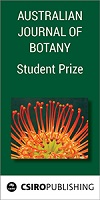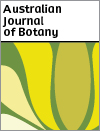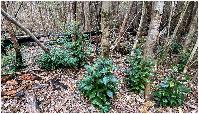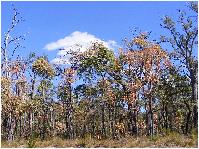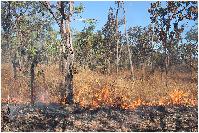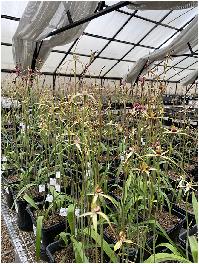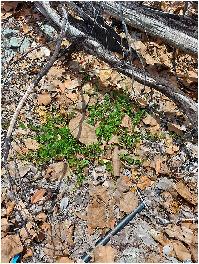Australian Journal of Botany
Volume 70
Number 3 2022
The winner of the 2021 Australian Journal of Botany student prize has been announced as Neil Ross, after his co-authored submission, ‘The contribution of pathogenic soil microbes to ring formation in an iconic Australian arid grass, Triodia basedowii (Poaceae)’ (Ross and Moles 2021).
Four rainforest classes in the Gondwana Rainforests of Australia World Heritage Area were surveyed to investigate woody rainforest plant response following the 2019–2020 bushfires. Most rainforest species persisted postfire by either resprouting or seed germination, resulting in increased stem density and species richness. Our findings demonstrate that subtropical, dry, warm temperate and littoral rainforest are resilient to occasional fire, and suggest that rainforest pioneers that invade rarely-burnt open forests may become resistant to removal by infrequent fires.
Stem traits affect the functioning of trees, including how they respond to severe drought events. Following a severe drought event in south-western Australia, two co-occurring tree species responded differently, and our findings showed differences in stem sapwood area between the species. These differences in stem sapwood area may help explain observed responses to drought, and tree species response to drought may be predicted with greater understanding of these relationships.
Bark growth and thickness has importance to the fire ecology and management of Australia’s eucalypts. Under selection from fire and moderate to low habitat productivity, eucalypt bark growth was mostly slow, displaying negative allometry with thinner bark than expected. A resource allocation trade-off to bark or height growth, combined with selection by fire for unique meristematic bark bud traces, enables post-fire survival through epicormic resprouting and eucalypt domination of Australia’s flammable biomes.
Conservation translocations are being increasingly used for threatened plants, yet have low success maintaining populations through recruitment. Using Caladenia colorata as our model species we assess whether we can improve survival and recruitment of translocated orchids by taking into account both the germination and adult plant niche. We found that incorporating both the germination niche and adult plant niche within plant translocations more broadly could significantly improve long-term population persistence and the utilisation of conservation funding.
Native understorey grasses and legumes were sown in mine waste-rock media (in a shadehouse and in situ) to investigate the influence of surface amelioration treatments on seedling emergence, growth and inflorescence production. Surface litter addition generally improved understorey species emergence and growth under water-constrained conditions in situ, whereas fertiliser application improved growth and inflorescence production in the shadehouse. Seed mass affected seedling emergence. In the field, sowing distance to tree trunks and canopy cover affected seedling emergence.
